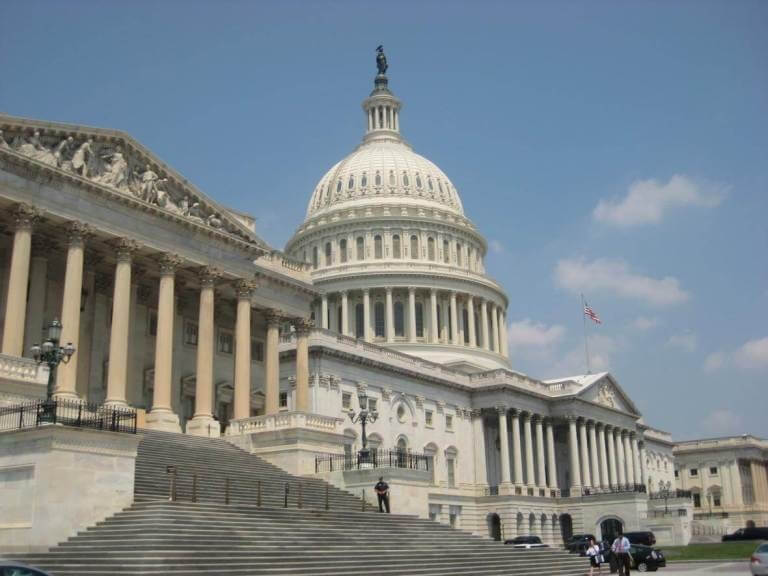A Divided Nation, Mixed Election Results

If you were expecting an unambiguous message from Tuesday’s election, you haven’t been paying enough attention to what’s going on in the country. There was never a chance for a clear, definitive outcome in a nation deeply divided and not even able to agree on basic facts.

Laslo Boyd
There were blue waves, but no blue tsunami. There was a Trump bump, but it was limited to his base. Turnout was up, but it wasn’t just one side that responded to the calls to vote. Moreover, decisions made by delegates at the Constitutional Convention in 1787 that gave an exaggerated voice to small states in the U.S. Senate continue to have an outsized impact on today’s political landscape.
Nevertheless, Tuesday’s election did cause some significant changes. Most importantly, Democrats regained control of the U.S House of Representatives. Having Elijah Cummings, congressman from Maryland, directing investigations of the Executive Branch rather than Trey Gowdy of South Carolina is a seismic difference. Multiply that by a long list of other committee chairmen and you understand why President Trump was in such a combative mood at his news conference on Wednesday.
Republicans increased their majority in the Senate, which really shouldn’t have come as a surprise to anyone. Joe Donnelly of Indiana, Heidi Heitkamp of North Dakota and Claire McCaskill of Missouri were all running against strong Trump headwinds. Still, Democrats lost a number of close races which, again, reflects how deeply fractured we are in this country. The winner-take-all nature of our elections obscures the narrowness of the divisions.
Earlier in the year, when some Democrats were giddy about their prospects of capturing both houses of Congress, they seemed to forget that Republicans would fight back with appeals to the base, lots of money, emotional and sometimes racist rhetoric from the president and, where they controlled the election rules, a willingness to bend them. When the Republican candidate for governor in Georgia is the person making decisions about who gets to vote, that is the very definition of a rigged election.
You could see the split nature of this country reflected in state elections as well. Republican Larry Hogan, personally popular in Maryland, won an easy re-election but saw others in his party have a horrible night. The next generation of Democratic leaders won county executive elections and seats in the General Assembly while the governor has become increasingly isolated.
On Wednesday, Hogan blamed the party losses on Trump while absolving himself of any responsibility for having no coattails. His win on Tuesday was clearly not a win for his party and leaves them in the same precarious condition they have been in for decades. Any national aspirations Hogan may have were certainly not helped by his failure to carry anyone else with him.
Across the nation, lots of women voted and lots of women were elected to public office. All the talk about the changing demographics of the country overlooks the reality that the most significant demographic group has been here all along. But now they are starting to vote in dramatically increasing numbers. And if that weren’t enough, the Republican Party and its national leader seem intent on driving away as many women as possible.
In Pennsylvania, four women were elected to Congress, increasing that state’s female congressional delegation by four. Marylanders might want to take note. You can find similar, dramatic increases among representation in the state legislature.
Pennsylvania is, like the rest of the country, deeply divided. Republicans retained control of the state legislature, albeit by reduced majorities. The Democratic governor and a U.S. senator were both easily reelected over weak opponents.
Where are we after Tuesday? There are a couple of major takeaways. First, Democrats for the first time in decades showed up in large numbers for a mid-term election. The base of the party is becoming increasingly women and minorities and is rapidly spreading to suburban areas around major cities.
The challenge for Democrats will be to realize that this year’s successes are only the first in a long series of battles that have to be fought. New voters and newly engaged supporters can’t take any time off or bask in complacency.
Republicans reaffirmed their reality as a party wholly dominated by Trump. He clearly stimulated base turnout and helped a number of Republicans win their elections. And, at his Wednesday press briefing, he ridiculed candidates who had not been loyal to him. That dynamic is likely to grow more pronounced over the remainder of his presidency.
We remain a split nation with no obvious path toward bridging the many divides. We are a long way from starting to heal. The main result of this most recent election was to solidify the battle lines.
— Laslo Boyd
The writer is a political commentator.




 Creative Commons Attribution
Creative Commons Attribution